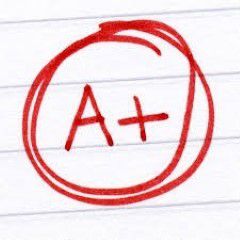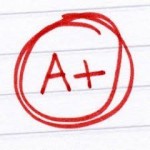ECET210 Week 7 iLab Complete Solution
Laboratory Procedures
DeVry University
College of Engineering and Information Sciences
I.OBJECTIVES
- To analyze a RC Low Pass Filter using simulation and circuit measurement.
- To analyze a RC High Pass Filter using simulation and circuit measurement.
- To analyze a LC Band Pass Filter using simulation and circuit measurement.
II. PARTS LIST
Equipment:
Function Generator
Dual Channel Oscilloscope
Parts:
1 - 50 Ω Resistor 1 - 470 nF, 50 V Capacitor
1 - 330 Ω Resistor 4 - 47 µF, 35 V Capacitor
4 - 4.7 mH Inductor 2 - 100 µF, 25 V Capacitor
1 - 470 mH, Inductor
Software:
MultiSim 11
III. PROCEDURE
- Simulation of RC Low Pass Filter |
- Enter the circuit shown in Figure 1 in MultiSim.
Figure 1 - Low Pass Filter
- Set the function generator voltage, VIn = 1 VP.
- Simulate the circuit shown for various frequencies indicated in Table 1 below. Record the output voltage, VOut, for each frequency and calculate the gain using the formula: 20 log(VOut P-P / VIn P-P).
| Frequency, Hz | VOut P-P | GaindB | Frequency, Hz | VOut P-P | GaindB |
| 100 |
|
| 2000 |
|
|
| 200 |
|
| 4000 |
|
|
| 400 |
|
| 8000 |
|
|
| 800 |
|
| 10000 |
|
|
| 1000 |
|
|
|
|
|
Table 1 – Low Pass Filter Frequency Response Simulation Data
Low
- Determine the voltage “Gain/Loss” in dB for the frequency response plot. Plot the simulation data of on the semi-log graph sheet below. The frequency must be on the X axis and the GaindB on the Y–axis.
- What is the 3 dB cutoff frequency from the plot?
fC =___________________
- Calculate the 3 dB Cutoff frequency using the formula: fC = 1/(2 π R C)
fC =___________________
- Does the simulated measurement agree with the theoretical calculation?
Yes ______ No ______
B. Simulation of RC High Pass Filter
- Enter the circuit shown in Figure 2 in MultiSim.
Figure 2 - High Pass Filter
- Set the function generator voltage, VIn = 1 VP
- Simulate the circuit shown for various frequencies indicated in Table 2 and record the output voltage and gain.
| Frequency, Hz | VOut P-P | GaindB | Frequency, Hz | VOut P-P | GaindB |
| 100 |
|
| 2000 |
|
|
| 200 |
|
| 4000 |
|
|
| 400 |
|
| 8000 |
|
|
| 800 |
|
| 10000 |
|
|
| 1000 |
|
|
|
|
|
Table 2 - Low Pass Filter Frequency Response Simulation Data
- Determine the voltage “Gain/Loss” in dB for the frequency response plot. Plot the simulation data of on the semi-log graph sheet below.
- What is the 3 dB cutoff frequency from the plot?
fC =___________________
- Calculate the 3 dB Cutoff frequency using the formula: fC = 1/(2 π R C)
fC =___________________
- Does the simulated measurement agree with the theoretical calculation?
Yes ______ No ______
C. Simulation of LC Band Pass Filter
- Enter the circuit shown in Figure 3 in MultiSim.
- Setup the function generator voltage, VIn = 1 VP.
- Simulate the circuit shown for various frequencies indicated in Table 3 and record the output voltage and gain.
| Frequency, Hz | VOut P-P | GaindB | Frequency, Hz | VOut P-P | GaindB |
| 200 |
|
| 340 |
|
|
| 250 |
|
| 344 |
|
|
| 280 |
|
| 348 |
|
|
| 290 |
|
| 355 |
|
|
| 300 |
|
| 352 |
|
|
| 320 |
|
| 356 |
|
|
| 324 |
|
| 360 |
|
|
| 330 |
|
|
|
|
|
Table 3 – Band Pass Filter Frequency Response Simulation Data
- Determine the voltage “Gain/Loss” in dB for the frequency response plot. Plot the simulation data of on the semi-log graph sheet below.
- What are the 3 dB cutoff frequencies from the plot?
Upper fC =_____________ Low fC =_____________
- The LC band pass filter is PI- Section filter which has been designed using the website:
http://www.raltron.com/cust/tools/band_pass_filters.asp
The filter has been designed to operate at a center frequency, fo of 340 Hz and a 3dB Bandwidth of 10% of fo.
Log in to the above website; feed the data of center frequency and the bandwidth desired. Verify if the design values chosen for the lab experiment are close enough.
- What are the calculated 3 dB cutoff frequencies?
Upper fC =_____________ Low fC =_____________
- Do the simulated measurements agree with the theoretical calculations?
Yes ______ No ______
- Increase or decrease the center frequency by 5 and recalculate the element values. Note and record the new design parameters. What can you comment on the new design values when compared with the original values?
- The filter can be reconfigured to a T–type using the transformation shown below:
| Some useful formulas for the Constant K type band pass filter design: | ||
| Bandwidth = f2 – f1
|
|
|
Source for the above formulas: “HANDBOOK OF LINE COMMUNICATIONS”, A Royal Signals Pub., 1947.
Using the suggested transformation, change the original PI type filter to T-type and simulate to verify if it works as the original. Include the new filter topology below here
- Did the filter work as the original? YES NO
D. Breadboard Construction of the three Filters
- Build the three filters simulated above on a breadboard, one at a time
- Use a Function Generator to excite the filters and check for the pass band and the cut off frequencies.
- Submit a photograph of each of your working circuits (online) or have your instructor sign-off each circuit (onsite).
Laboratory Report Cover Sheet
DeVry University
College of Engineering and Information Sciences
Course Number: ECET210
Professor:
Laboratory Number: 6
Laboratory Title: Frequency Response of Low Pass, High Pass, and Band Pass Filters
Submittal Date: Click here to enter a date.
Objectives:
Results:
Conclusions:
| Team: |
|
|
|
|
|
|
| Name |
| Program |
| Signature |
|
|
|
|
|
|
|
|
| Name |
| Program |
| Signature |
|
|
|
|
|
|
|
|
| Name |
| Program |
| Signature |
Observations/Measurements:
III. A. 3. Low Pass Filter Frequency Response:
| Frequency, Hz | VOut P-P | GaindB | Frequency, Hz | VOut P-P | GaindB |
| 100 |
|
| 2000 |
|
|
| 200 |
|
| 4000 |
|
|
| 400 |
|
| 8000 |
|
|
| 800 |
|
| 10000 |
|
|
| 1000 |
|
|
|
|
|
III. A. 4. Low Pass Filter Frequency Response:
III. A. 5. Low Pass Filter Simulated Cutoff Frequency:
fC =___________________
III. A. 6. Low Pass Filter Calculated Cutoff Frequency:
fC =___________________
III. A. 7. Low Pass Filter Simulated Versus Calculated Cutoff Frequency:
Match: Yes No
III. B. 3. High Pass Filter Frequency Response:
| Frequency, Hz | VOut P-P | GaindB | Frequency, Hz | VOut P-P | GaindB |
| 100 |
|
| 2000 |
|
|
| 200 |
|
| 4000 |
|
|
| 400 |
|
| 8000 |
|
|
| 800 |
|
| 10000 |
|
|
| 1000 |
|
|
|
|
|
III. B. 4. High Pass Filter Frequency Response:
III. B. 5. High Pass Filter Simulated Cutoff Frequency:
fC =___________________
III. B. 6. High Pass Filter Calculated Cutoff Frequency:
fC =___________________
III. B. 7. High Pass Filter Simulated Versus Calculated Cutoff Frequency:
Match: Yes No
III. C. 3. Band Pass Filter Frequency Response:
| Frequency, Hz | VOut P-P | GaindB | Frequency, Hz | VOut P-P | GaindB |
| 200 |
|
| 340 |
|
|
| 250 |
|
| 344 |
|
|
| 280 |
|
| 348 |
|
|
| 290 |
|
| 355 |
|
|
| 300 |
|
| 352 |
|
|
| 320 |
|
| 356 |
|
|
| 324 |
|
| 360 |
|
|
| 330 |
|
|
|
|
|
III. C. 4. Band Pass Filter Frequency Response:
III. C. 5. Band Pass Filter Simulated Cutoff Frequencies:
Upper fC =_____________ Low fC =_____________
III. C. 7. Band Pass Filter Calculated Cutoff Frequencies:
Upper fC =_____________ Low fC =_____________
III. C. 8. Band Pass Filter Simulated Versus Calculated Cutoff Frequency:
Match: Yes No
III C. 9. Modified Center Frequency:
Comment on new design values:
III. BC. 11. T-type Band Pass Filter:
Did the filter work as the original? YES NO
Questions:
- Did the filters work exactly like the simulation data?
|
| YES / NO | Reasons for Noncompliance with Simulation |
| Low Pass Filter |
|
|
| High Pass Filter |
|
|
| Band Pass Filter |
|
|
Grade:
| Deliverable | Points Available | Points Achieved |
| Laboratory Cover Sheet | 8 |
|
| Working Circuit(s)/Program(s) | 8 |
|
| Observations/Measurements | 6 |
|
| Questions | 8 |
|
| Total Points | 30 |
|
|
| ||
| Comments:
| ||
ECET210 Week 7 iLab Complete Solution
CH-2 Positive Peak
Voltage 338 V ...






Studyacer
Senior JournalistSell Your Solution Report Solution Support Center
Online Users
-
 Studyacer
Today
Studyacer
Today
A+ - Thank you!
Thanks for the positive feedback!